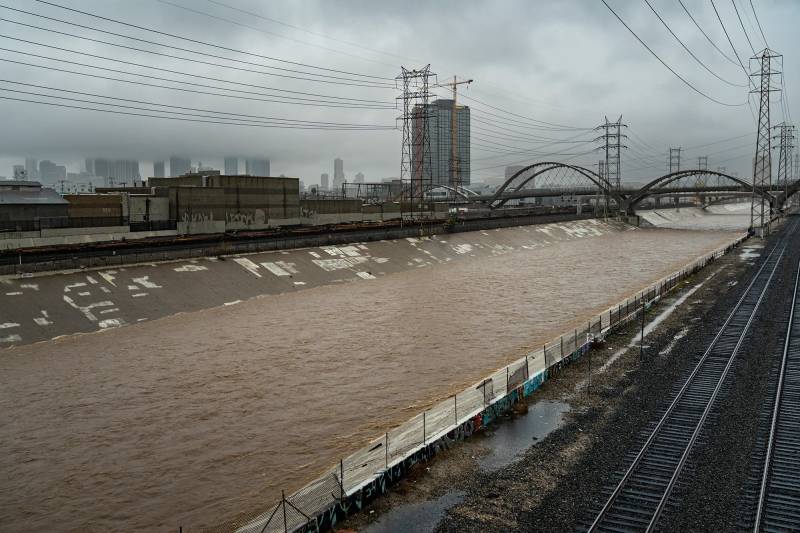“The whole area is designed with storm drains to capture all the flows so that people don’t get flooded, people’s property don’t get flooded,” said Adam Ariki, interim deputy director at Los Angeles County Department of Public Works. “We’re really trying to capture as much of it as possible. And with time, that number is going to go higher and higher and higher.”
In many cases, water containing oil, trash and other pollutants must be treated before it can percolate into aquifers pumped for drinking water. In others, lack of open space limits where runoff could be allowed to seep naturally into the ground.
Also, in some controversial cases, particularly the Bay-Delta in Northern California, experts say stormwater must flow into rivers and the ocean to support fish (PDF) and other wildlife. Growers and others in the Central Valley criticize those flows and call for more reservoirs, saying the water is wasted.
Sometimes, there’s just too much rain at once to capture all of it. “Some flows may need to be sacrificed or allowed to go to the ocean because you can only capture so much of it, especially like last year,” Ariki said. “That’s the challenge.”
Water officials and experts agree that capturing more stormwater before it flows into drains is a top priority to help boost California’s water supply.
Los Angeles County already collects about 200,000 acre-feet of runoff a year, including about 95% of the San Gabriel River’s flows — enough to fill about 100,000 Olympic-sized swimming pools. Last year, among the wettest in California, the county captured around 630,000 acre-feet of storm flows, Ariki said.
Fourteen dams capture flows off the mountains (PDF) that are then slowly released into 27 spreading grounds, where they percolate into the ground to feed aquifers. However, capturing water from concrete rather than mountainsides can be more challenging.
